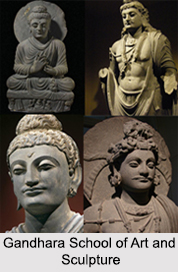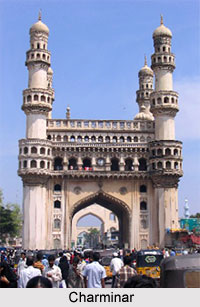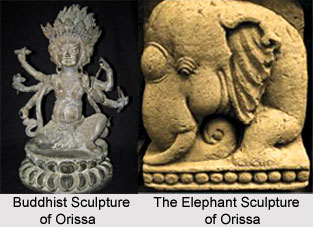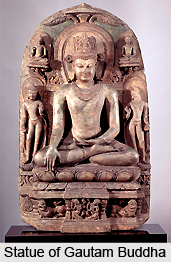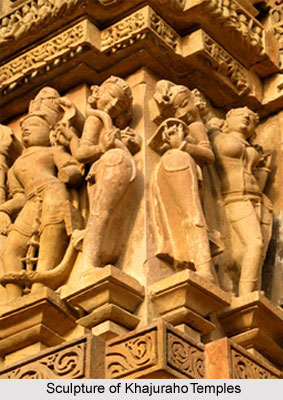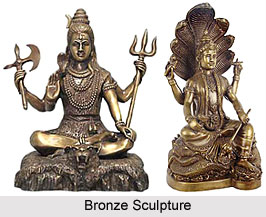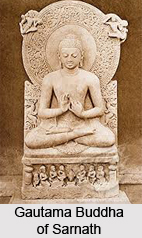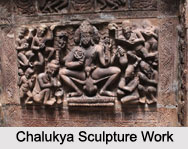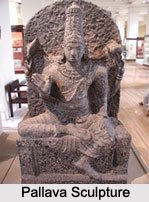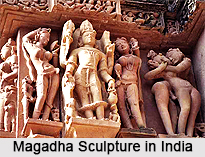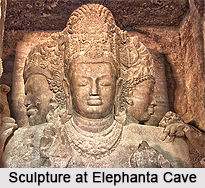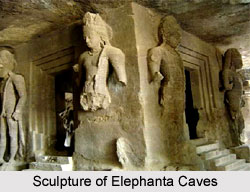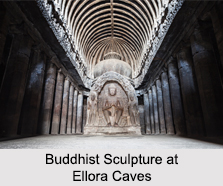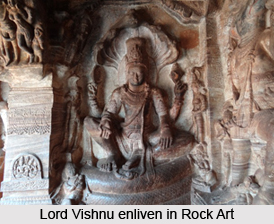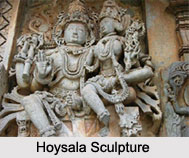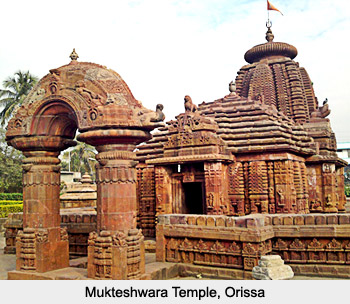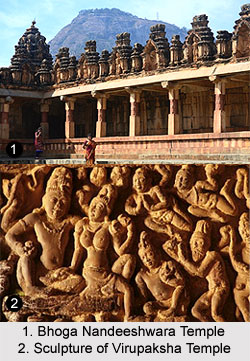 Temple sculptures of Karnataka have received patronage of Kings of Chalukya dynasty to that of Wodeyar dynasty. Some of the temple sculptures of Karnataka even belong to the 7th century AD. With the different empires ruling the place a number of styles for temple building evolved here. But the predominant style is the Dravidian art and sculpture.
Temple sculptures of Karnataka have received patronage of Kings of Chalukya dynasty to that of Wodeyar dynasty. Some of the temple sculptures of Karnataka even belong to the 7th century AD. With the different empires ruling the place a number of styles for temple building evolved here. But the predominant style is the Dravidian art and sculpture.
Temple Sculpture of Chalukya dynasty
In around 7th century Chalukyas of Badami awed the world with their rock cut caves and ancient temple complexes. There were two places where temples were profusely built: Aihole and Pattadakal. The Rashtrakutas succeeded the Badami Chalukyas and then the Western or Kalyani Chalukyas followed. Sculptural art in Karnataka started in the pre-historic era. The architecture and sculpture of the Chalukyas of Badami occupy an important place. The entries on Badami, Aihole and Pattadakal have dealt with them vividly. There is a separate entry on the Chalukya architecture and sculpture.
The Chalukyas of Badami were reasonably catholic. One finds sculptural edifices belonging to Hindu, Jaina and Buddhist religions during their regime. Badami it self has a Jaina cave, a Buddhist cave and caves dedicated to Shiva and Vishnu.Later in the 14th century the Vijayanagar Empire came into being. Ornate pillars, huge gateways and pillared mandapas characterised the temples commissioned by this dynasty. The ruins of Hampi are a glaring example of the Vijayanagara artistic brilliance. Around the 15th century the Mysore Maharajas also contributed in the development of the temple sculptures of Karnataka.
During the rule of Chalukyas of Kalyani in the 10th, 11th and 12th centuries sculpture had developed in to a traditional academic discipline. The sculpting of the idols and other details were governed by the set of rules. Each and every God had its own set of features. Postures were predetermined. The idols were not original despite being beautiful. The Tripurantaka temple at balligave, kalleshvara temple at kukkanuru, brahmajina temple at lakkundi, mallikarjuna temple at kuruvatti and kashi vishveshvara temple at lakkundi illustrate the salient features of the Kalyani Chalukya period. In idol carving Classicism, naturalism in depicting nature and expression in animals and human beings were adopted by these artists.
Temple sculpture of Rashtrakuta, Ganga and Nolamba dynasty
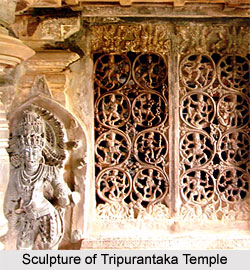 The contribution of the Rashtrakuta dynasty, which ruled in Karnataka and many other parts of South and central India, in the field of sculpture is immense even though most of those places lie outside the boundaries of present day Karnataka. The sculptural achievements of the Ganga dynasty which ruled in South Karnataka cannot be underestimated.
The contribution of the Rashtrakuta dynasty, which ruled in Karnataka and many other parts of South and central India, in the field of sculpture is immense even though most of those places lie outside the boundaries of present day Karnataka. The sculptural achievements of the Ganga dynasty which ruled in South Karnataka cannot be underestimated.
The sculpture of Ganga dynasty exhibits variety. Thin carvings on hard granite reminiscent of Buddhist sculptures to well rounded full fledged idols are its features. Jaina, Shaiva and Vaishnava idols look unique. Mahisasuramardini icon at Kunigal and nandi, nataraja and umamaheshvara idols at araluguppe and Dharanendra yaksha idol at kambadahali are noteworthy. A remarkable example of Ganga sculpture is the great monolithic statue of Bagavan bahubali at Shravanabelagola.
The Nolamba dynasty was an off shoot of the Pallava kingdom. They developed a style by borrowing elements from Chalukya, Ganga and Pallva styles. Nandi and Avani in Karnataka contain specimens of their style. The lakshmaneshvara temple at Avani and the Boga nandishvara temple at nandi contain a number of beautiful sculptures of kali, nataraja, mahisasuramardini, saptamatrukas and so on.
Temple sculpture of Hoysalas
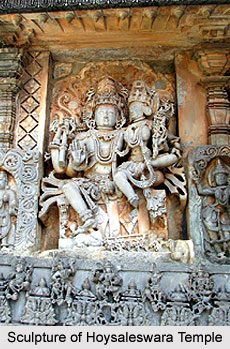 On the other hand in South Karnataka the Hoysalas proved to be prolific builders. Some of the best known temples in Karnataka have been constructed by them. A fine example of Hoysala sculpture is the sculpture of Hoysaleswara Temple. The Hoysala period represents a division in the history of sculpture in the state. Black stone was employed which made room for a lot of finesse. The idols of Gods, Goddesses and human beings are carved intricately with an eye for minute detail. Human expression was of paramount importance to the sculptors. The statues of the celebrated `madanikaas` is a good example. The temples at Belur, Halebeedu, Somantahpura and Doddagaddavalli, lakshminarayana temple in hosaholalu, Ishvara temple in arasikere and Chennakesava temple at araluguppe are examples of masterpieces created by sculptors of Hoyasala Empire. The decorative panels on the surface of the outer walls contain small but intricate sculptures of elephants, horses, creepers, birds, men and women playing on musical instruments. The stories from Ramayana and Mahabharata and contemporary life have also been depicted here.
On the other hand in South Karnataka the Hoysalas proved to be prolific builders. Some of the best known temples in Karnataka have been constructed by them. A fine example of Hoysala sculpture is the sculpture of Hoysaleswara Temple. The Hoysala period represents a division in the history of sculpture in the state. Black stone was employed which made room for a lot of finesse. The idols of Gods, Goddesses and human beings are carved intricately with an eye for minute detail. Human expression was of paramount importance to the sculptors. The statues of the celebrated `madanikaas` is a good example. The temples at Belur, Halebeedu, Somantahpura and Doddagaddavalli, lakshminarayana temple in hosaholalu, Ishvara temple in arasikere and Chennakesava temple at araluguppe are examples of masterpieces created by sculptors of Hoyasala Empire. The decorative panels on the surface of the outer walls contain small but intricate sculptures of elephants, horses, creepers, birds, men and women playing on musical instruments. The stories from Ramayana and Mahabharata and contemporary life have also been depicted here.
Temple sculpture of Vijayanagara Empire
The sculptors of Vijayanagara Empire used granite. However there were no intricate carvings. Most of the sculptures of the Empire can be seen in Hampi and its surroundings. Ugranarasimha, badavi linga, mustard ganesha, Bengal gram ganesha, the decorated figures on the sixteen pillars in the Virupaksha temple , Arab and other merchants on the panels of the achyutaraya temple, the complex pillars at the vijaya Vitthala temple, panels of the `manavami dibba` and the outer walls of the Vidyashankara temple in Sringeri are examples of the exquisite sculptures of this period.
The kings of the Wodeyar dynasty in Mysore and the chieftains of Keladi, Chitradurga encouraged sculpture. However the achievements were limited in scope. These sculptures lacked originality.




